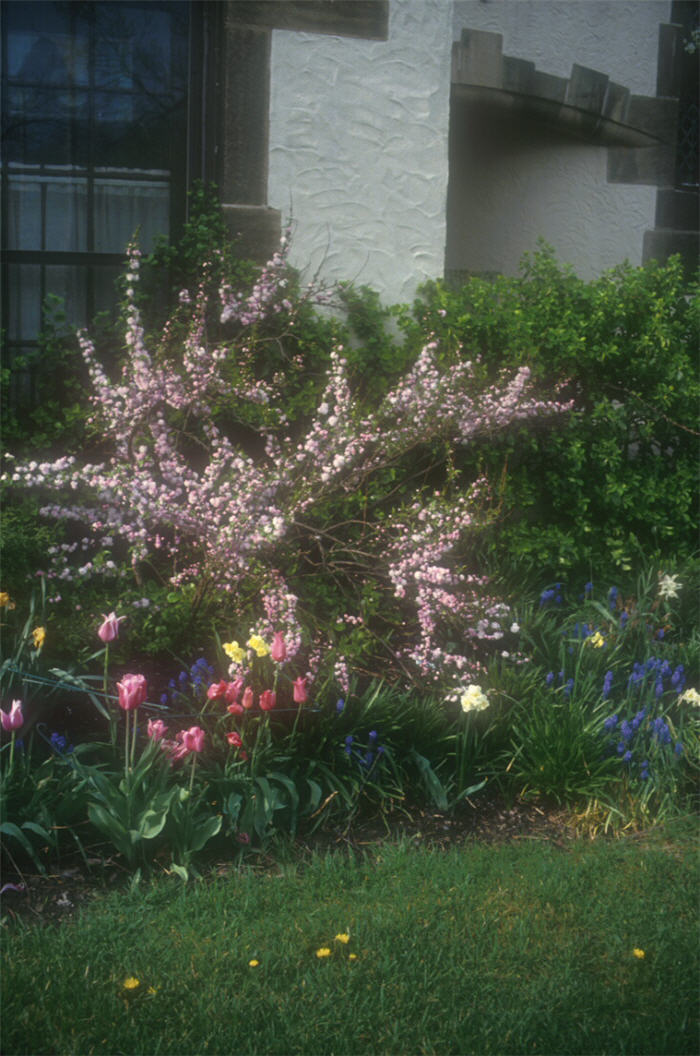| Botanical Name: Prunus glandulosa | |
| Common Name: Flowering Almond |

-
Anatomy
-
Culture
-
Design
Plant Type
Shrub
Height Range
3-6'
Flower Color
Pink, White
Flower Season
Spring
Leaf Color
Green
Bark Color
Brown, Red
Fruit Color
Red
Fruit Season
Summer
Sun
Full, Half
Water
High
Growth Rate
Moderate
Soil Type
Loam
Soil Condition
Average, Rich, Well-drained
Soil pH
Neutral
Adverse Factors
Messy
Design Styles
English Cottage, Japanese, Woodland
Accenting Features
Showy Flowers
Seasonal Interest
Spring
Location Uses
Background, Shrub Border, Foundation, Walls / Fences
Special Uses
Cut Flowers, Hedge, Naturalizing
Attracts Wildlife
Birds
Information by: Stephanie Duer
Photographer: Jerry Sortomme SBCC
Photographer: Jerry Sortomme SBCC
-
Description
-
Notes
This spring-blooming deciduous shrub doesn't produce almonds, but does have lovely, rose-like pink blossoms appearing in the early spring, just in time for daffodils and early tulips. It grows about 5 to 6 feet tall and 3 to 4 feet wide, with an upright vase shape. Leaves emerge after flowering a bronzy red, mature to green, but no fall color of note. Flowers are followed by small, dark red fruits enjoyed by birds. 'Rosea Plena' has double-petaled, pink flowers; "Alba Plena" has double-petaled white flowers. An old-fashioned shrub.
Grow in well drained soil in full to part sun, ideally in a location with some protection from freezing winter winds. Prefers soils rich in organic matter. To maintain its form, prune selectively immediately after flowering; sheering cuasing it to beceom dense, irregular in shape, and twiggy. In time it may sucker, slowly forming a dense little colony.